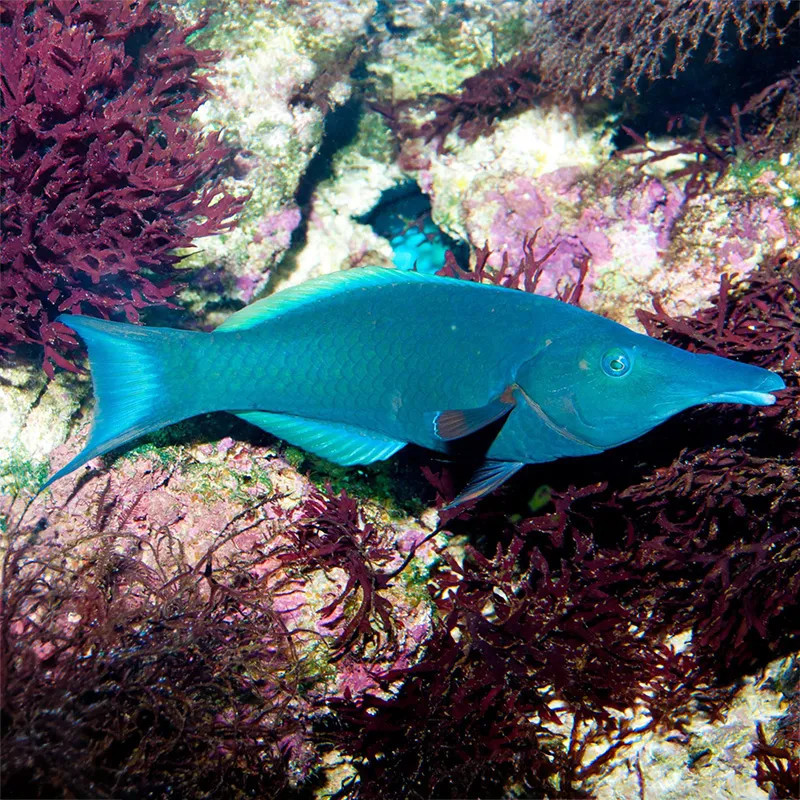Stocks Available
Exquisite Fairy Wrasse M
SKU:227151
Cirrhilabrus exquisitus
2-3 INCH

Stock Available
Introduction: • Common Name: Green Bird Wrasse • Native Habitat: The Green Bird Wrasse is typically found in the tropical waters of the Indo-Pacific region, particularly around coral reefs and rocky substrates. They thrive in shallow waters, often near the surface, where they can easily access their preferred food sources. Physical Characteristics: • Appearance: This species is characterized by its elongated, slender body, which exhibits vibrant green coloration, especially in juveniles. Adult Green Bird Wrasses may display more muted tones, with hints of blue and yellow. • Size: Adults can grow up to 9 inches (23 cm) in length. • Fins: They possess long, pointed dorsal fins that enhance their streamlined appearance, which aids in swift movements through their habitat. Habitat Requirements: • Tank Size: A minimum tank size of 75 gallons is recommended to accommodate their active swimming behavior. • Water Conditions: • Temperature: Ideal water temperature ranges from 74°F to 82°F (23°C to 28°C). • pH Level: A pH of 8.1 to 8.4 is suitable for this species. • Salinity: Maintain salinity levels between 1.020 and 1.025. • Aquascaping: Provide ample live rock and hiding spots to mimic their natural environment, as they enjoy exploring and grazing on algae. Diet: • Feeding Habits: The Green Bird Wrasse is carnivorous, primarily feeding on small invertebrates and zooplankton in the wild. • Dietary Options: In captivity, they do well on a varied diet that includes high-quality pellets, frozen foods like shrimp and mysis, and live food to stimulate their natural hunting behavior. • Feeding Frequency: Offer food 2 to 3 times a day, ensuring that the portions are small enough for them to consume quickly. Compatibility: • Temperament: The Green Bird Wrasse can be semi-aggressive, particularly when establishing territory, but is generally compatible with other species. • Tank Mates: Suitable tank mates include other active reef fish, such as tangs, clownfish, and certain species of wrasses. • Incompatibilities: Avoid keeping them with small, slow-moving fish that may be bullied, as well as other wrasses that may compete for territory. Care Level: • Difficulty: Moderate. While hardy, the Green Bird Wrasse requires a stable environment and a varied diet to thrive. • Health Monitoring: Regular water changes and careful monitoring of water parameters are crucial to prevent health issues such as fin rot or stress-related diseases. Breeding: • Breeding Behavior: Breeding in captivity is rare, as they typically spawn in the open water. Little is known about their specific breeding behaviors, but they are thought to be seasonal spawners. • Fry Care: Raising fry in captivity is challenging due to their small size and specific dietary needs in early life stages. Economic Considerations: • Market Demand: The Green Bird Wrasse is sought after in the aquarium trade for its unique appearance and vibrant colors. • Pricing: Prices vary based on size and availability, but they are generally considered a mid-range species. Sustainability and Conservation: • Wild Population: The Green Bird Wrasse is not currently threatened, but habitat degradation and overfishing can pose risks to their populations. • Aquaculture: Most individuals in the trade are collected from the wild, though aquaculture efforts for this species are limited. Conclusion: The Green Bird Wrasse is an attractive and lively addition to a marine aquarium. With its vibrant colors and active behavior, it can enhance the aesthetic appeal of a reef tank. Proper care, suitable tank mates, and a balanced diet are essential for keeping this species healthy and thriving in a captive environment.
Data sheet
16 other products in the same category:
Customers who bought this product also bought: